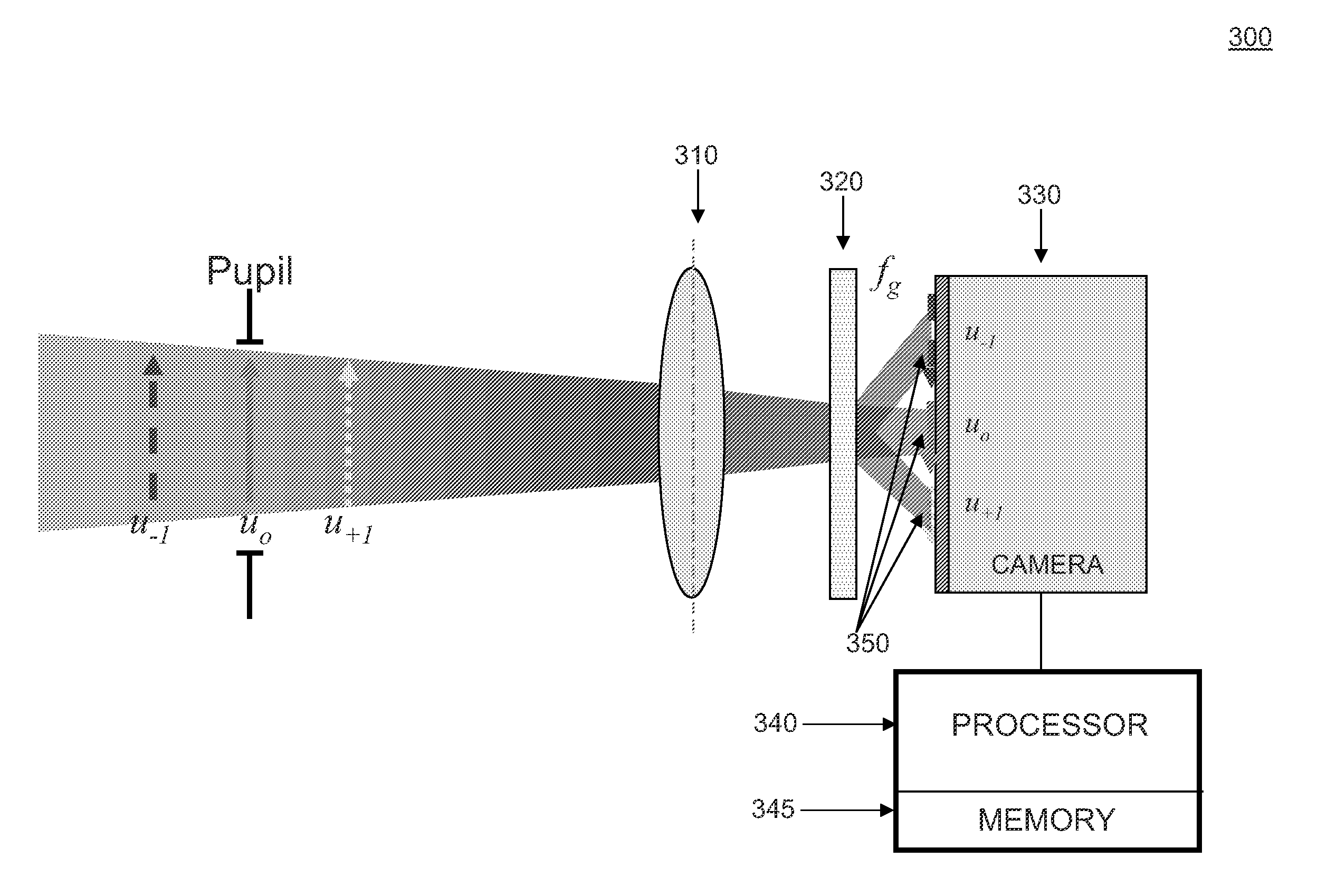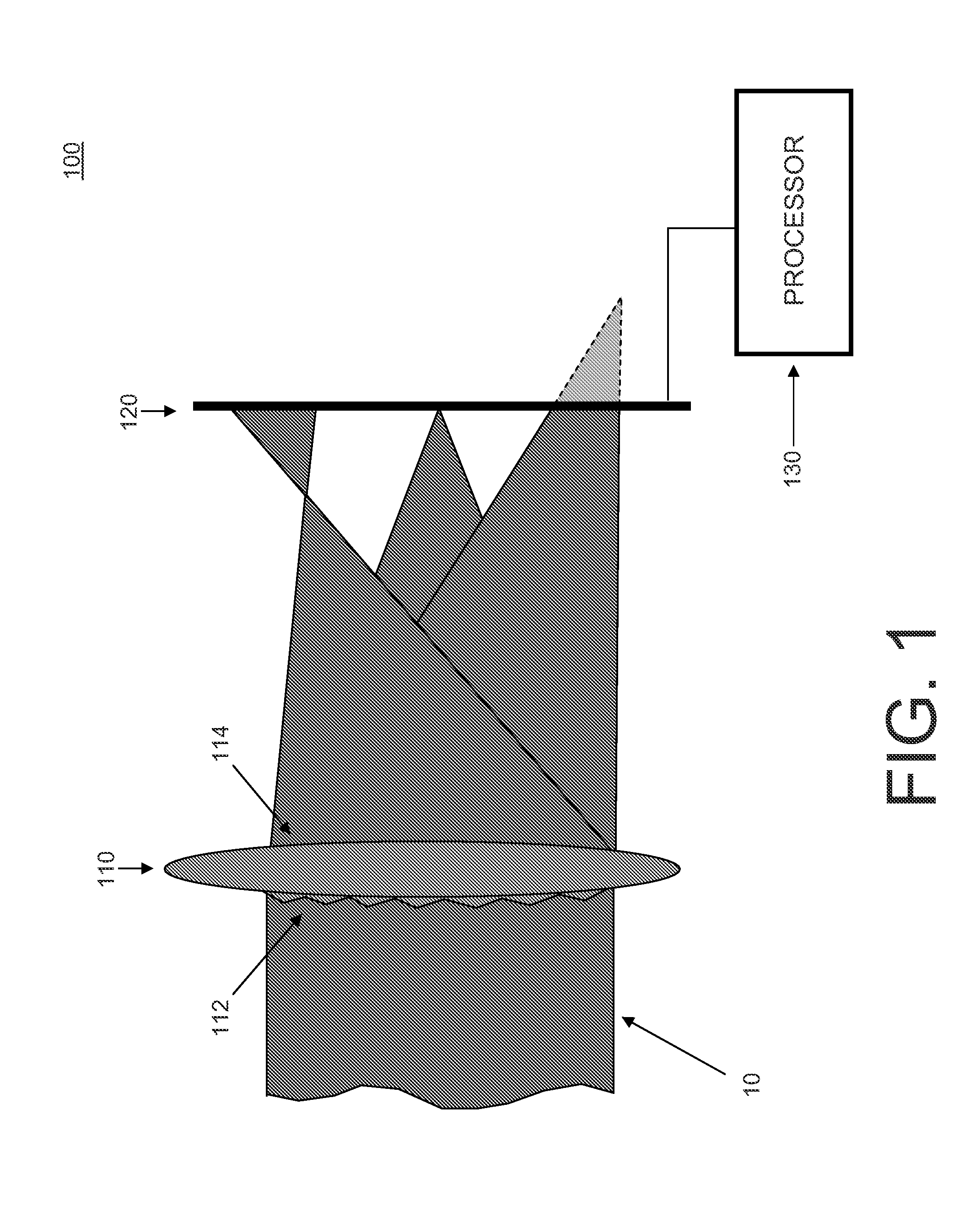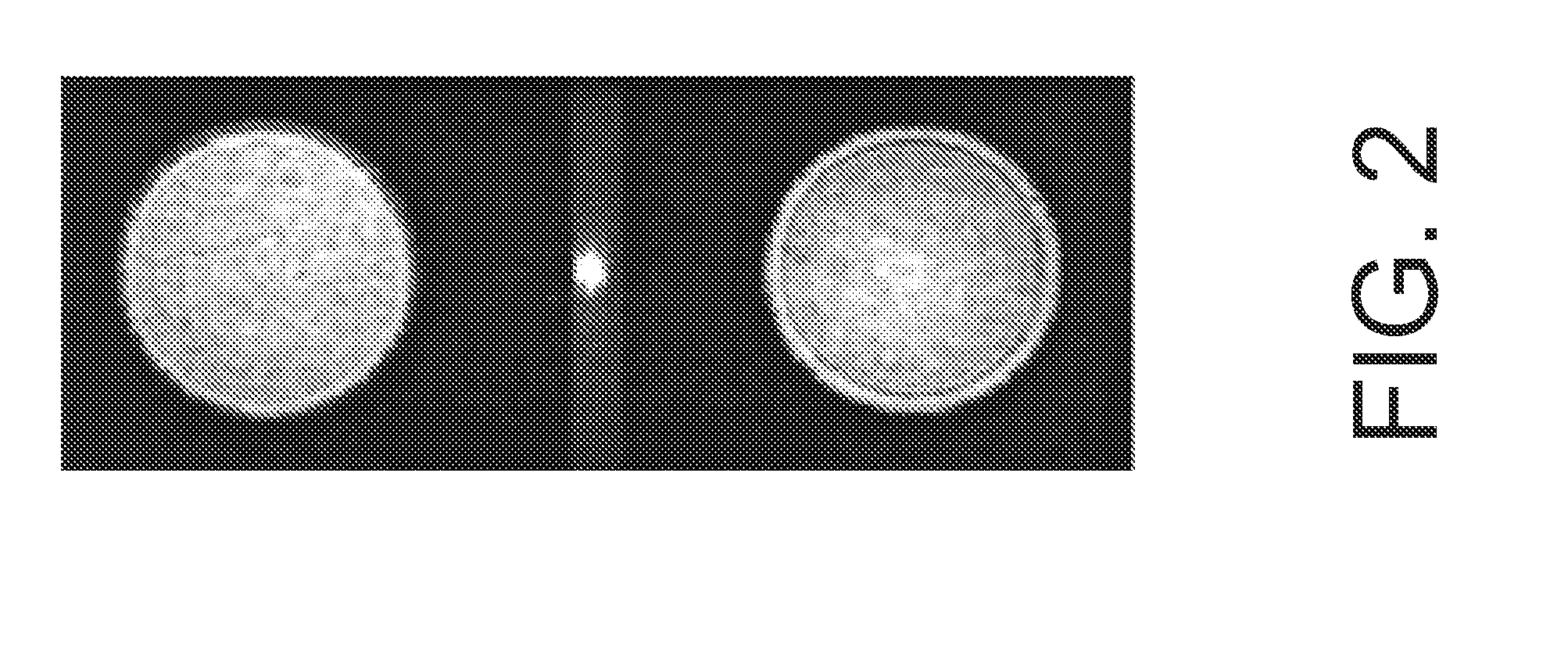Systems and methods of phase diversity wavefront sensing
a wavefront sensor and phase diversity technology, applied in the field of wavefront measurement, can solve the problems of affecting the measurement accuracy of optical elements produced by multifocal optical elements, and affecting the measurement accuracy of optical elements
- Summary
- Abstract
- Description
- Claims
- Application Information
AI Technical Summary
Problems solved by technology
Method used
Image
Examples
Embodiment Construction
[0039]FIG. 1 illustrates the use of a diffractive optical element (DOE) in a phase diversity wavefront sensor (PDWS) 100. PDWS 100 includes an optical element 110, a detector 120, and a processor 130. Optical element 110 includes a diffractive optical element (DOE) (e.g., a diffraction grating) 112 collocated with optical element 114 with positive focal power. Although shown in transmission mode, optical element 110 may alternately be used in reflection where diffraction grating 114 is collocated with optical element 114 comprising a mirror.
[0040]In the illustrated embodiment, optical element 114 is a lens, and diffractive grating 112 is disposed on a surface of lens 114. Alternatively, diffractive grating 112 may be incorporated inside lens 114 or be formed from the material used to form lens 114. In some embodiments, lens 114 and diffractive grating 112 form a single DOE, where lens 114 is itself a DOE, for example, disposed on a same surface or an opposite surface as diffractive ...
PUM
 Login to View More
Login to View More Abstract
Description
Claims
Application Information
 Login to View More
Login to View More - R&D
- Intellectual Property
- Life Sciences
- Materials
- Tech Scout
- Unparalleled Data Quality
- Higher Quality Content
- 60% Fewer Hallucinations
Browse by: Latest US Patents, China's latest patents, Technical Efficacy Thesaurus, Application Domain, Technology Topic, Popular Technical Reports.
© 2025 PatSnap. All rights reserved.Legal|Privacy policy|Modern Slavery Act Transparency Statement|Sitemap|About US| Contact US: help@patsnap.com



